After making my fig preserves with all the delicious fresh figs I found at the store, I decided to create another recipe using them. In Costa Rica, Fig cake is a well-known and beloved dessert throughout the year, but it becomes especially popular during Christmas time. Here in the United States, figs are in season right when we start transitioning from summer to fall, and making this cake during that time not only made me feel like I was back home, sitting with my family enjoying a slice of fig cake, but also made me feel like Christmas had already arrived.
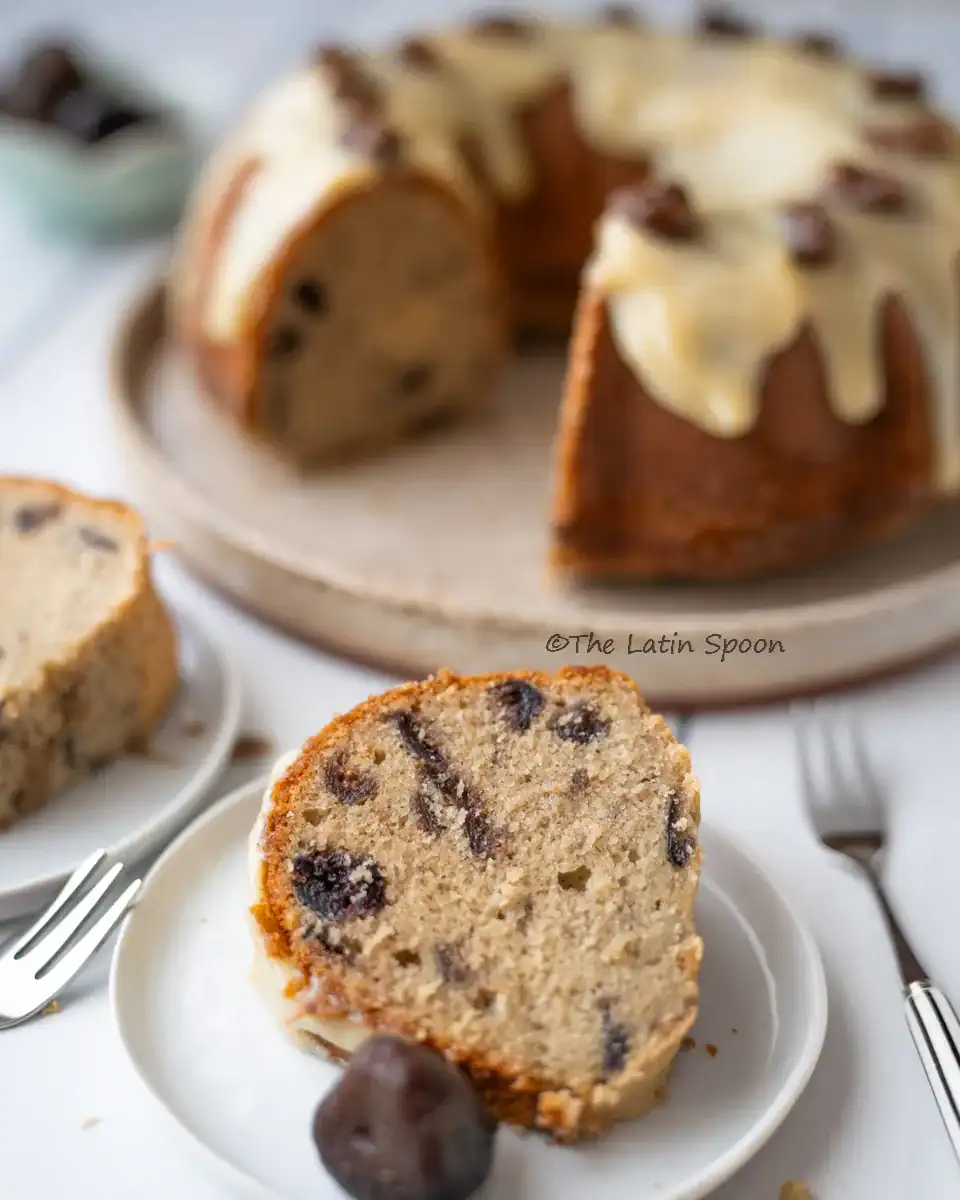
We’re also making this cake using the creaming method, which involves beating the butter and sugar together for a few minutes to incorporate air into the mixture. This acts as a leavening agent, helping the cake turn out soft yet firm, with a tender crumb that holds together beautifully without falling apart.
Not only is the fig cake delicious, but the condensed milk glaze on top is the perfect match for it. I really hope you give the glaze a try as well.
What is Condensed Milk Glaze?
Condensed milk glaze is a simple, rich, and glossy topping made by gently heating sweetened condensed milk with butter, heavy cream, and sometimes vanilla extract.
As it cooks, the mixture thickens and becomes smooth and pourable. When poured over cakes, it sets into a shiny layer that adds sweetness and moisture without being as heavy as frosting.
It is very common in Latin American desserts, especially in Costa Rican and Brazilian recipes, because it adds a creamy, caramel-like flavor that pairs beautifully with sponge cakes, fruit cakes, and even pastries.
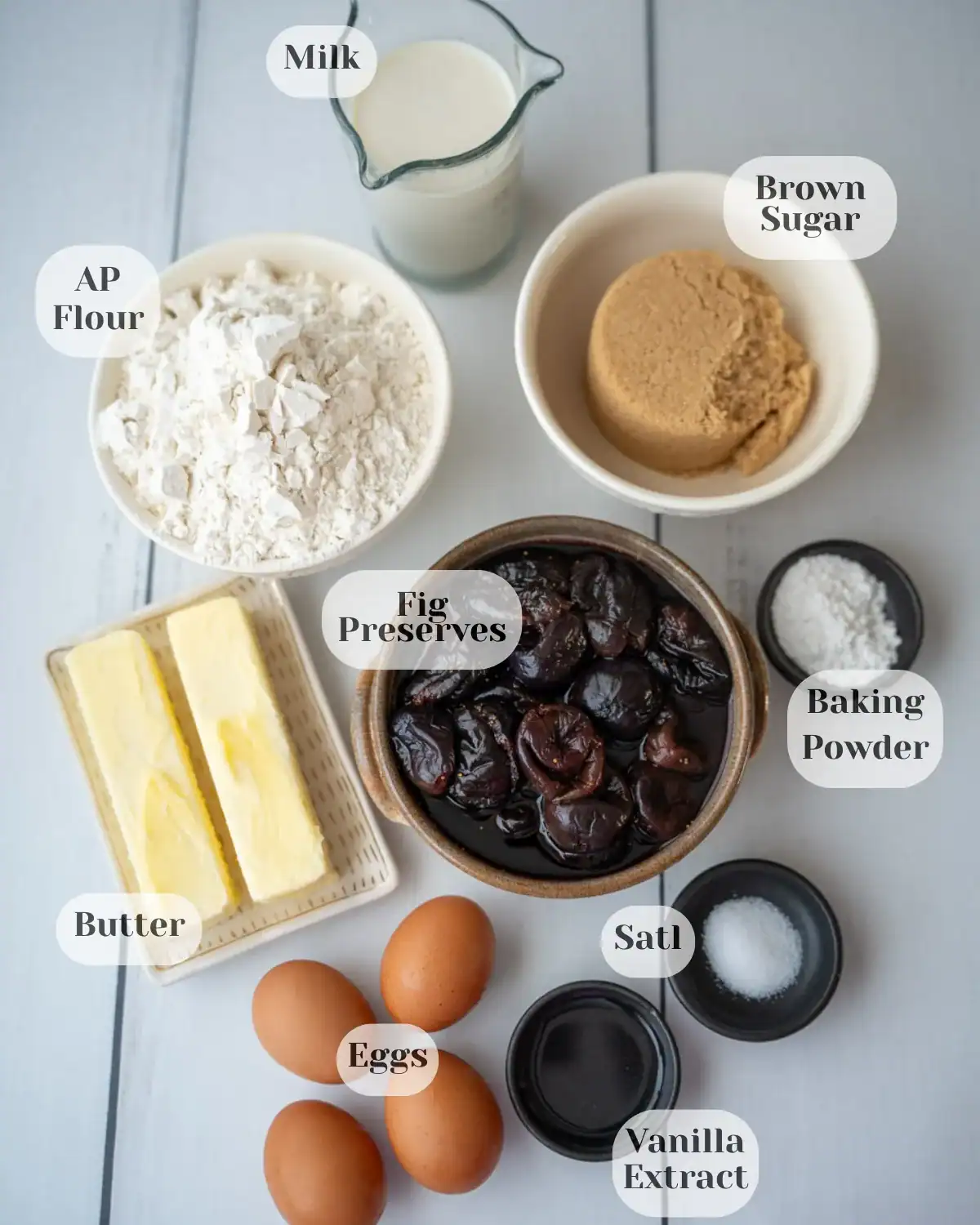
Ingredients for The Fig Cake Batter
These are the ingredients we’re going to use for the cake.
🌾 All-purpose flour
This is the regular flour most people already have at home. If you want to make this recipe gluten-free, use a flour that says 1:1 gluten-free baking mix so you can replace it in the same amount without changing the texture of the cake.
🍯 Brown sugar
In Costa Rica, this cake is traditionally made with tapa de dulce (unrefined cane sugar). If you want to try the authentic version, you can find it here. I didn’t have any on hand and didn’t want to wait for it to arrive, so I used regular brown sugar instead, and I was very happy with the final result.
🧈 Butter
I use unsalted butter, but if you decide to use salted butter, simply skip the salt in the recipe.
🥚 Eggs
Make sure the eggs are at room temperature, just like the butter. This helps everything mix together smoothly and evenly.
🍈 Fig preserves
I used my own Fig Preserves recipe to take advantage of the fig season. It gives the cake an amazing flavor and a beautiful texture.
🧂 Salt, baking powder, and vanilla extract
These ingredients help create a nice balance of flavors and ensure the cake rises perfectly while baking.
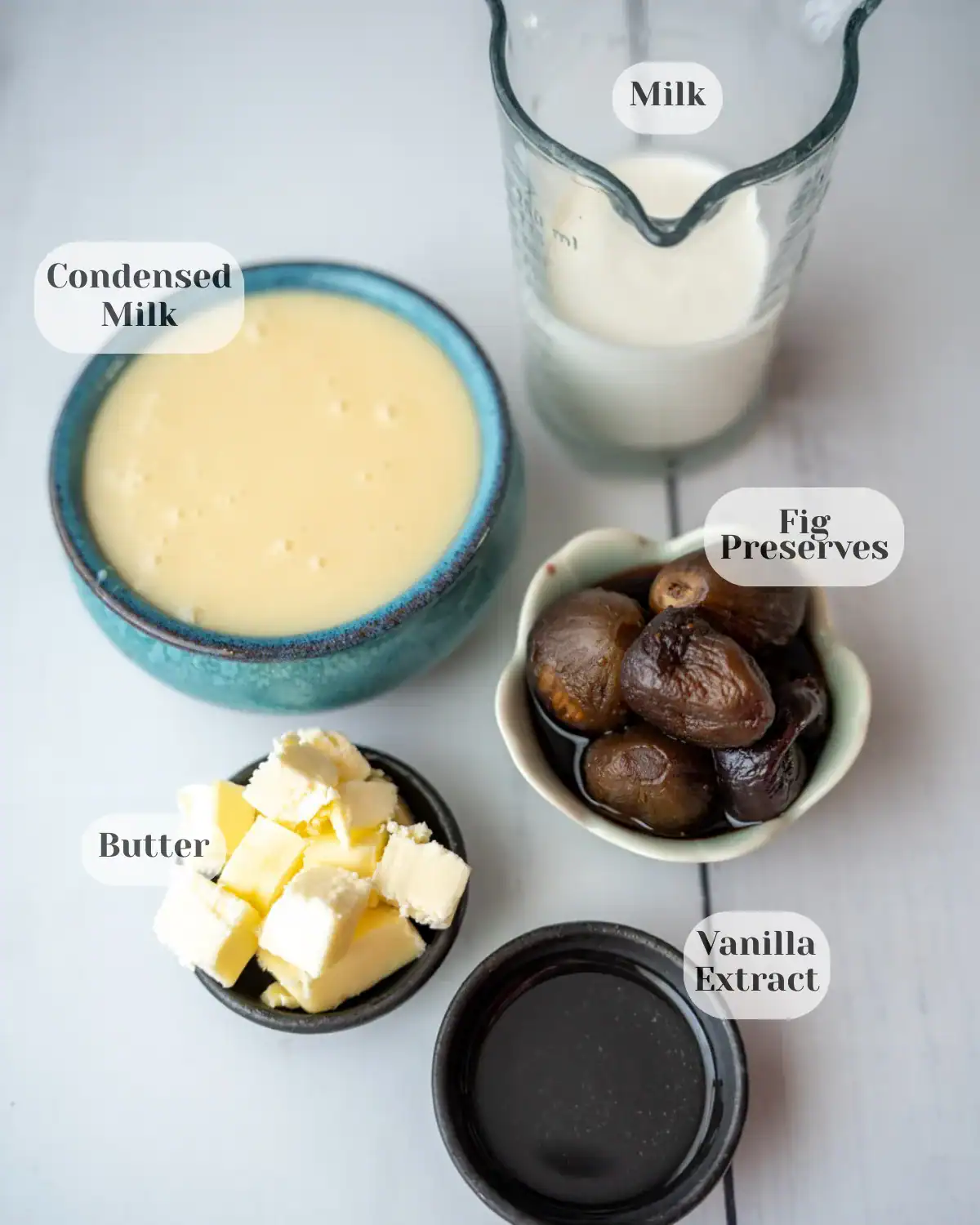
Ingredients for The Condensed Milk Glaze
This fig cake is already delicious on its own, but adding the glaze takes it to another level. Here are the ingredients.
🥛 Condensed milk
This ingredient is very common in Latin cooking, and it’s easy to find in almost any grocery store in the United States, usually in the baking aisle. You can also use vegan condensed milk, and it will give you the same delicious result.
🍶 Heavy cream
Adds richness and helps thin out the condensed milk just enough so it becomes a smooth, pourable glaze that drips beautifully over the cake.
🧈 Butter
Gives the glaze a silky texture and a soft, creamy shine once it sets on the cake.
🌿 Vanilla extract
Adds that warm, aromatic flavor that balances the sweetness of the condensed milk.
🍈 Figs
You can use fresh figs or the fig preserves from our recipe. They’re meant for decorating the top of the cake, making it look even more delicious while showing everyone what kind of cake it is.
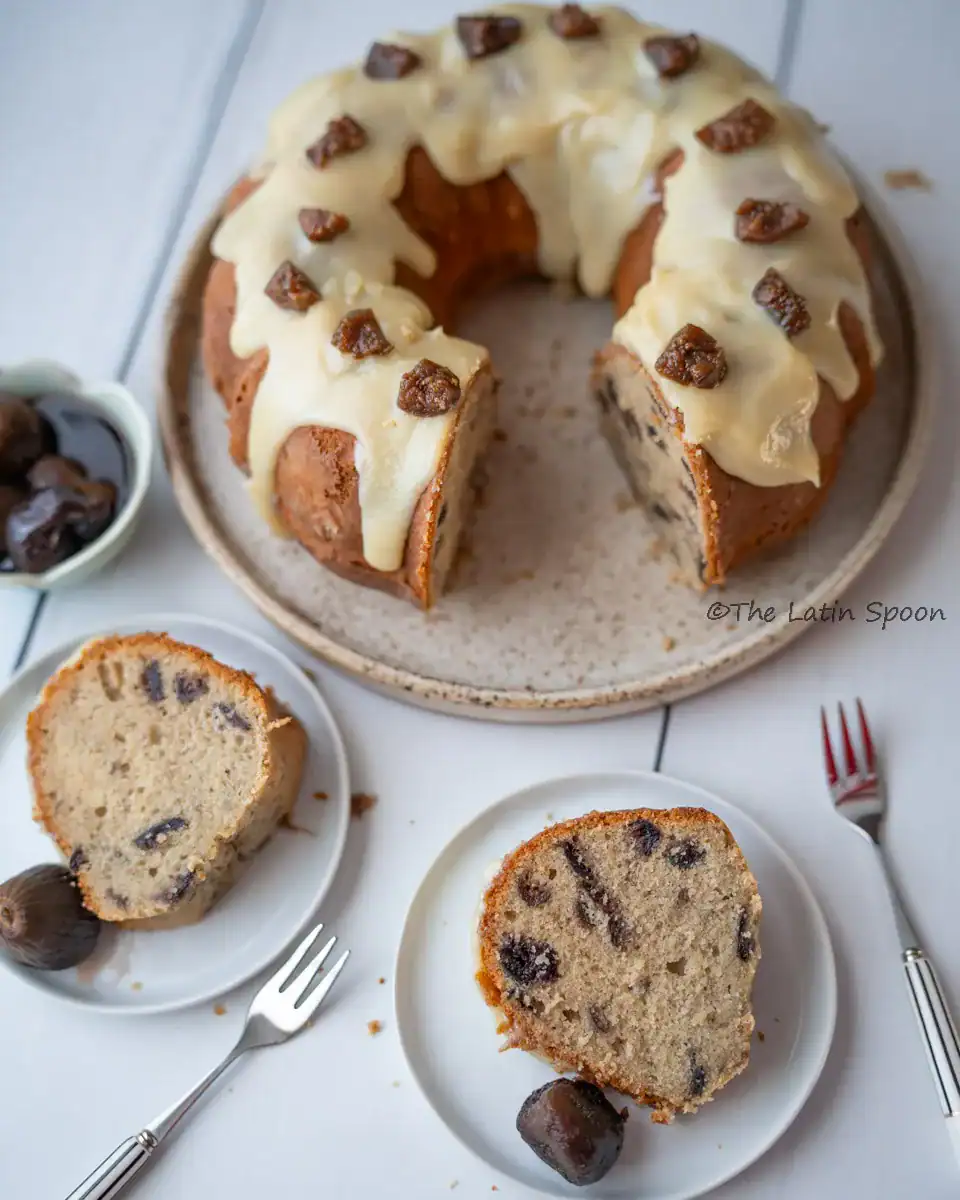
💡 Extra Tips for a Fluffy and Creamy Cake
- Always preheat the oven and prepare your baking pan before you start mixing. This makes the process smoother and helps the cake bake evenly.
- Always use butter at room temperature. If you forgot to take it out earlier, microwave it in 10-second intervals until softened, but do not melt it.
- The same goes for the eggs. They should also be at room temperature. If they’re cold, place them in a bowl with warm (not hot) water for a few minutes to bring them up to temperature faster.
- Do not overmix the batter. Overmixing activates the gluten and can make the crumb dense and tough instead of light and fluffy.
- Check the thickest part of the cake to make sure it’s fully baked. Insert a bamboo stick or a knife, and if it comes out clean, the cake is ready.
- Let the cake rest for 10 minutes before unmolding. If you flip it right out of the oven, there’s a higher chance it will break.
Step-by-step photos
Pictures speak louder than words, so here’s a step-by-step with photos (and just a few words) to show you how to prepare Fig Cake.
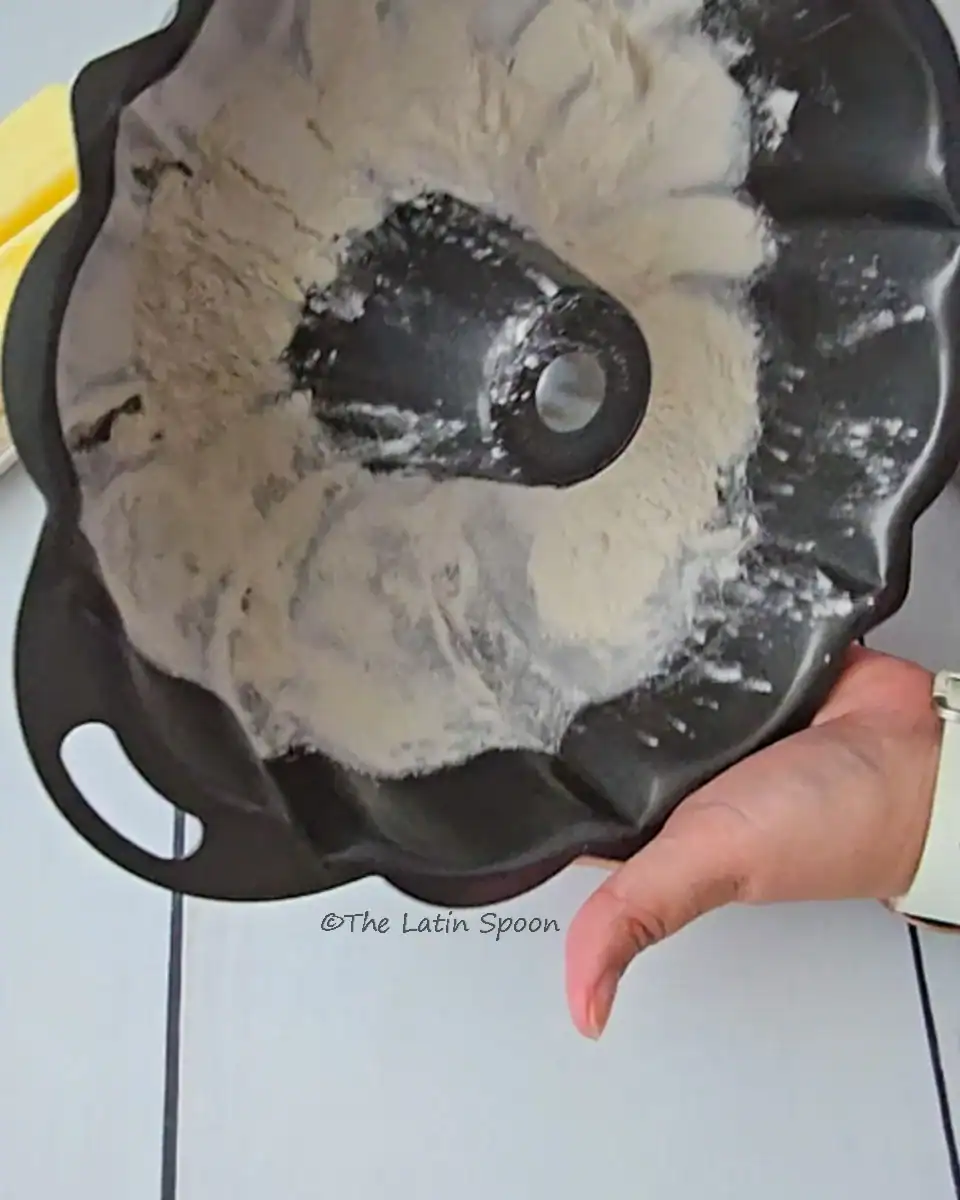
Step 1: Preheat the oven to 350°F (175°C) and prepare your bundt cake pan. Grease it with oil spray, spread evenly, dust with a little flour, and set aside.
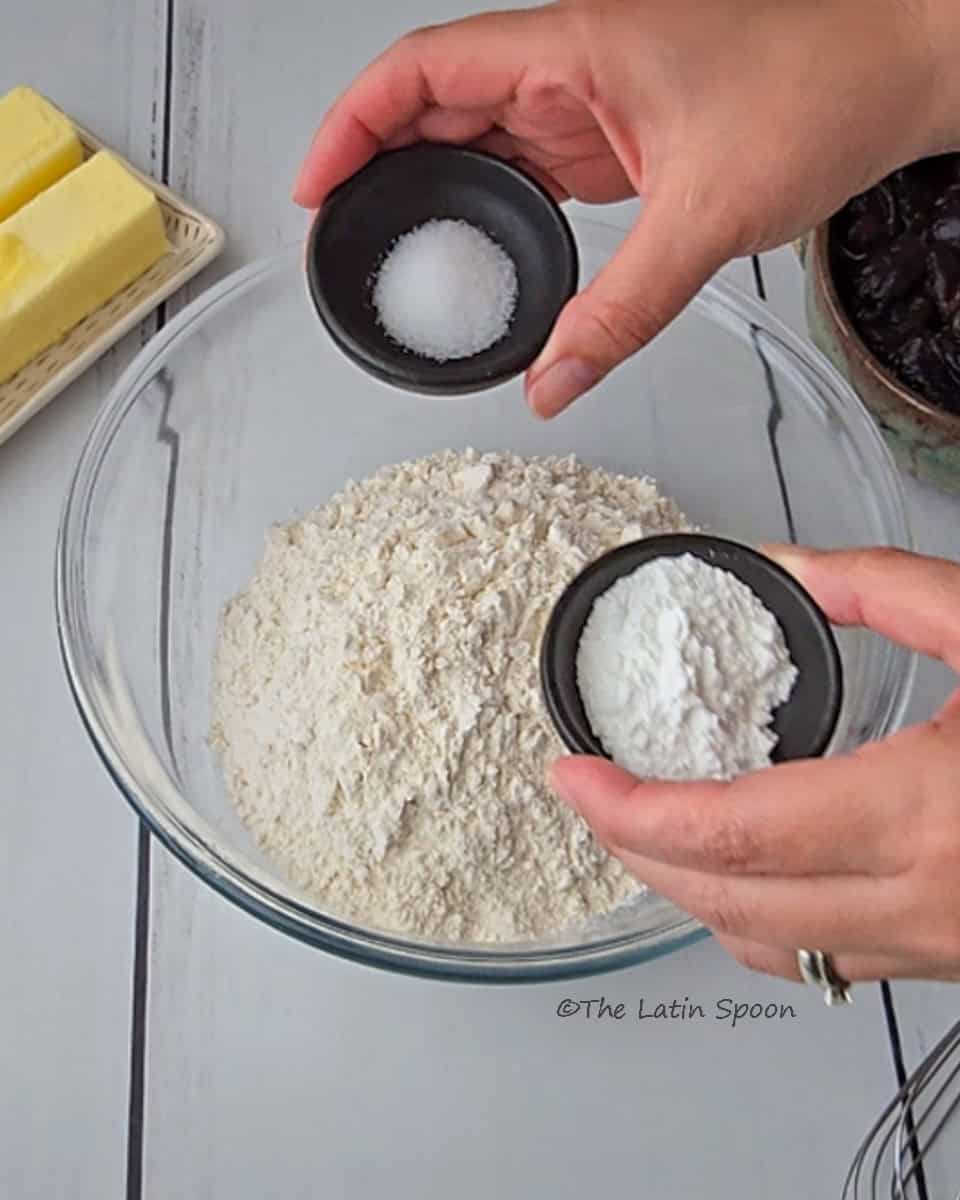
Step 2: In a medium bowl, combine the dry ingredients (flour, baking powder, and salt). Mix well and set aside.
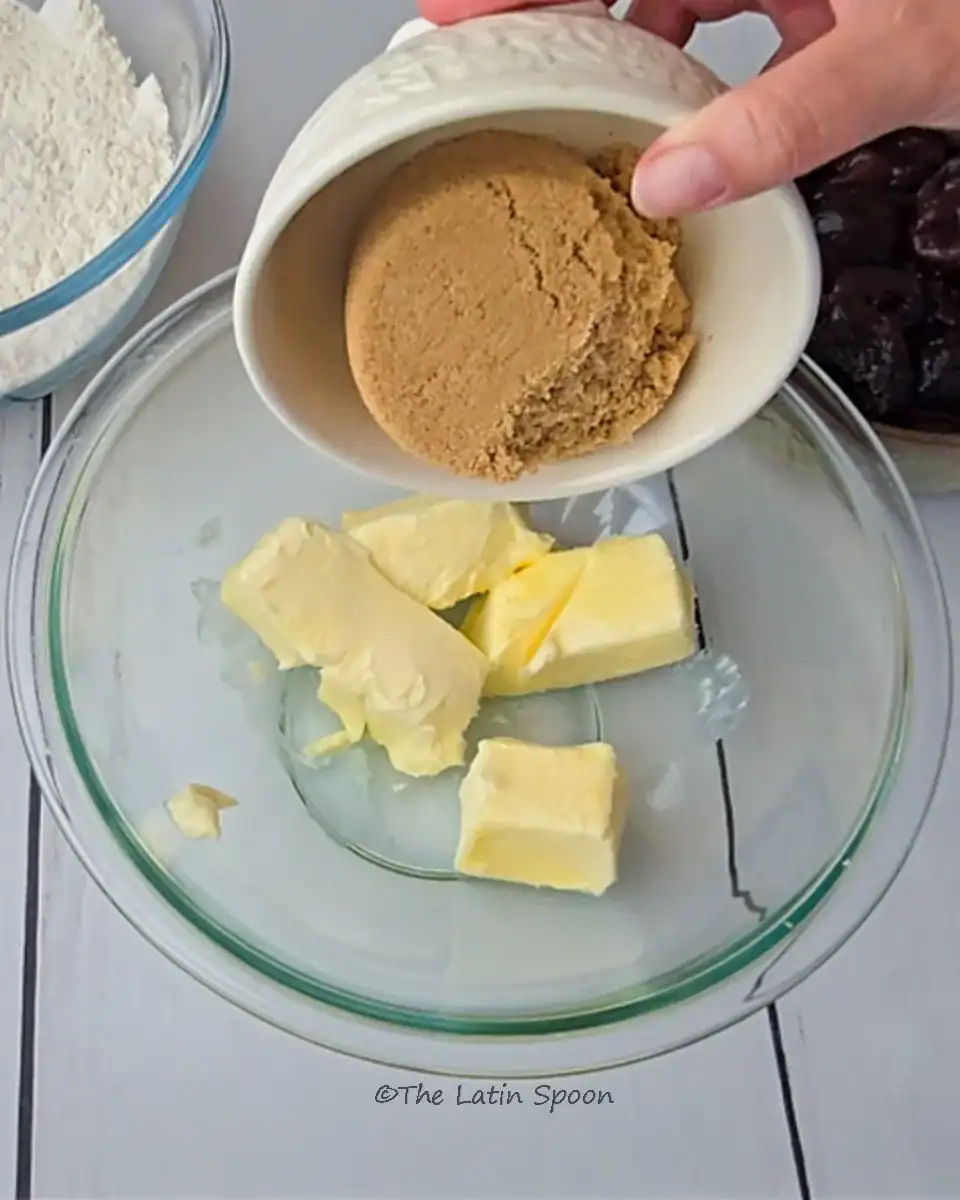
Step 3: In a large bowl, cream the butter and sugar for about 5–7 minutes, until the mixture looks lighter in color and airy.
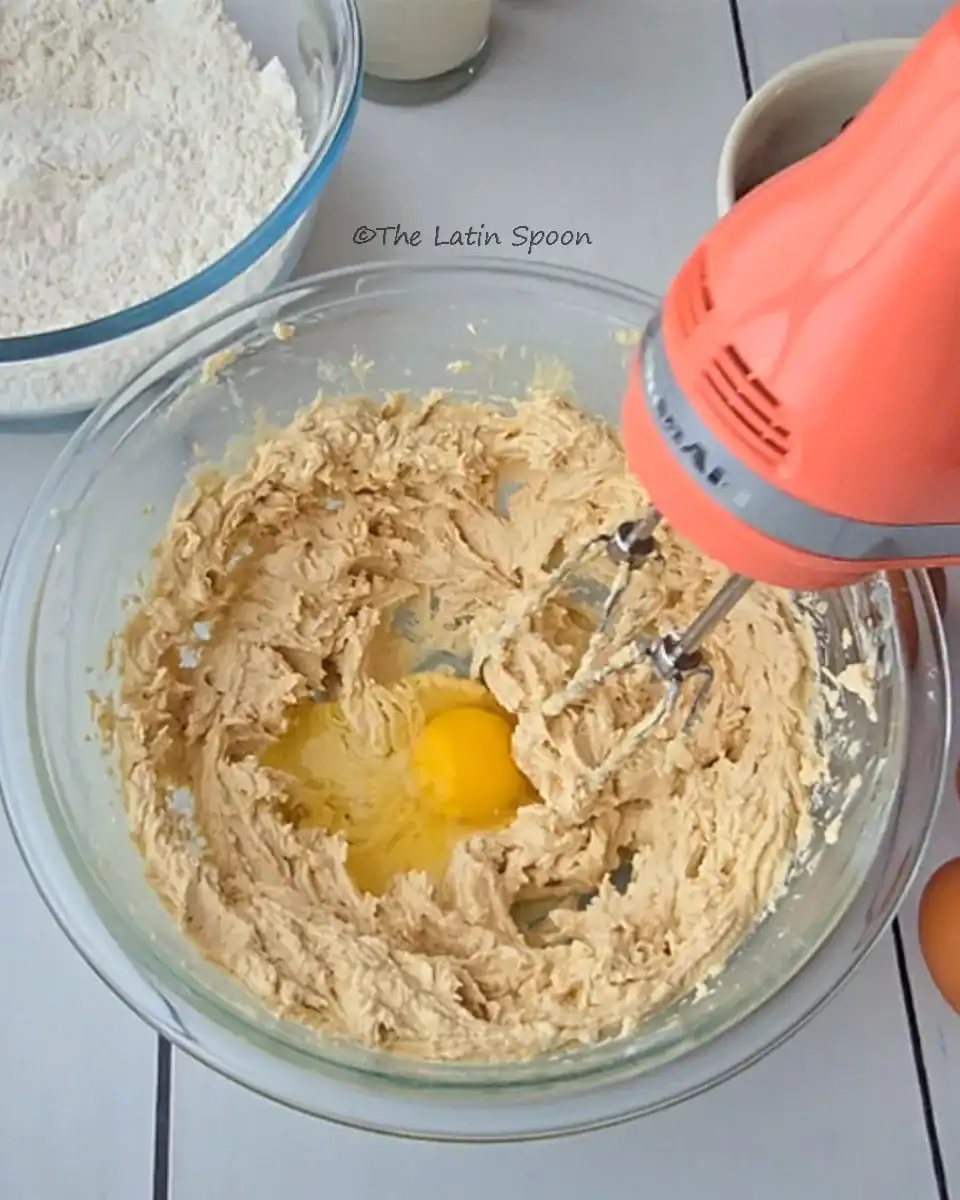
Step 4: Add one egg at a time, mixing for about 40 seconds or until fully incorporated before adding the next one. Repeat until all eggs are added.
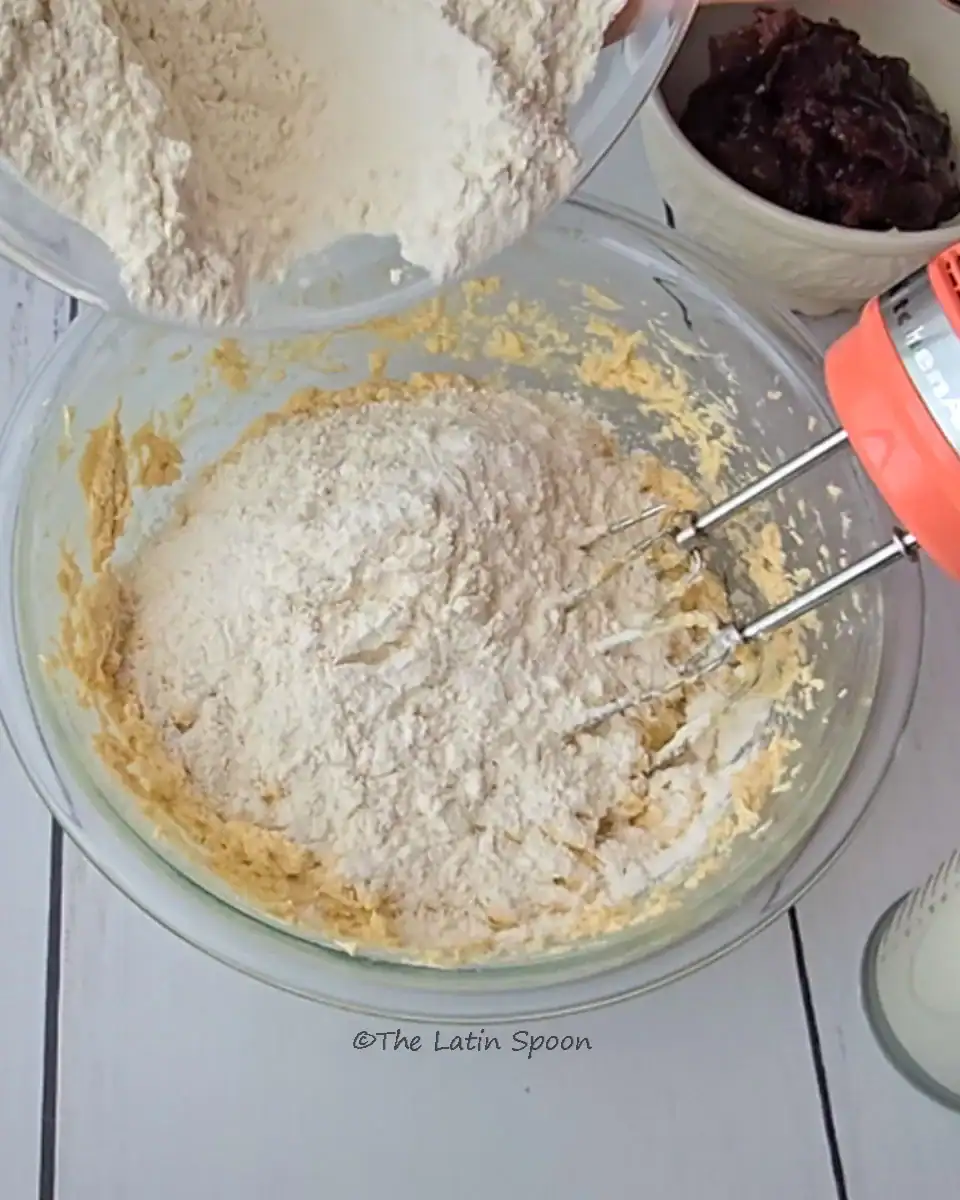
Step 5: Add one-third of the dry ingredients and mix slowly until combined.
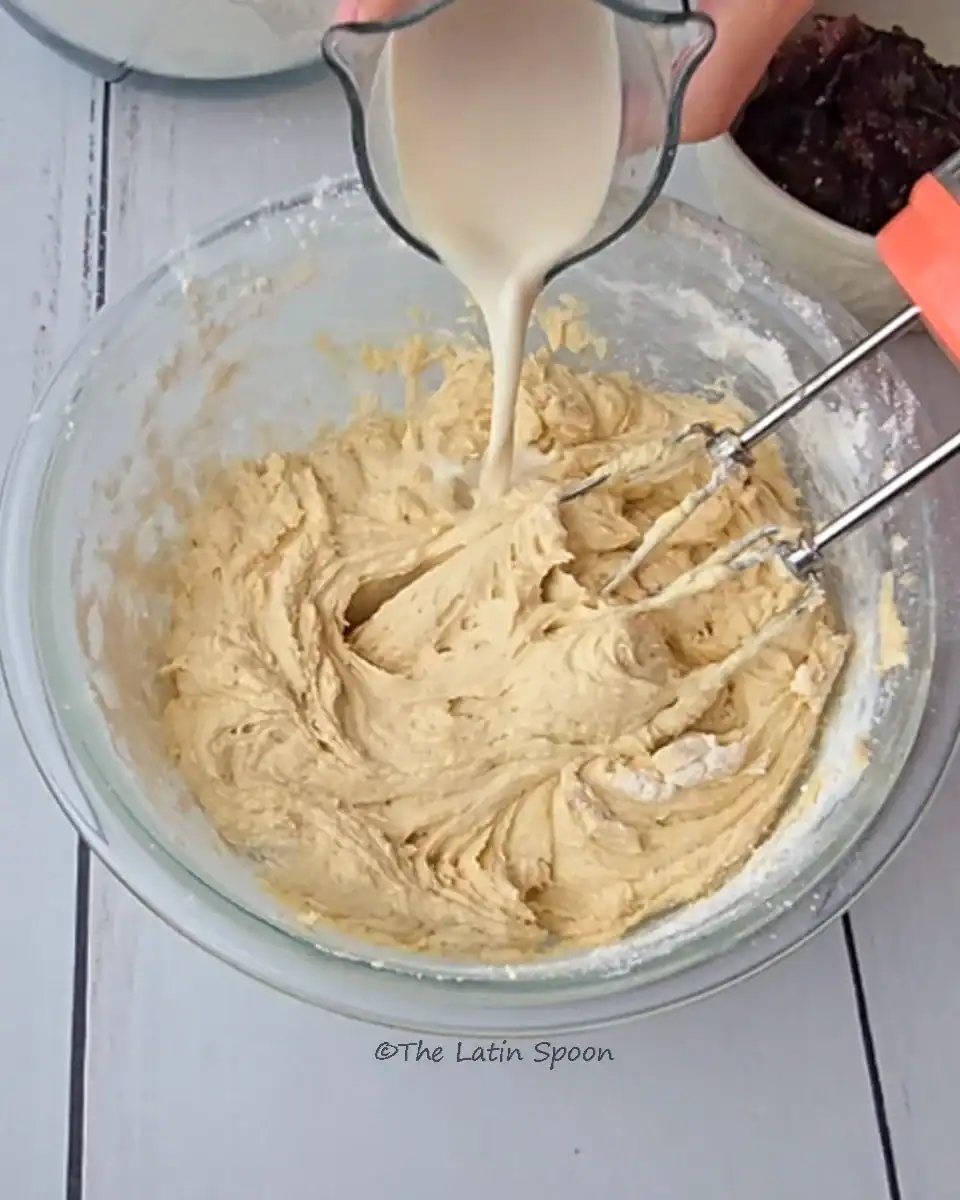
Step 6: Then add half of the milk and continue mixing. Alternate between dry ingredients and milk until everything is incorporated.
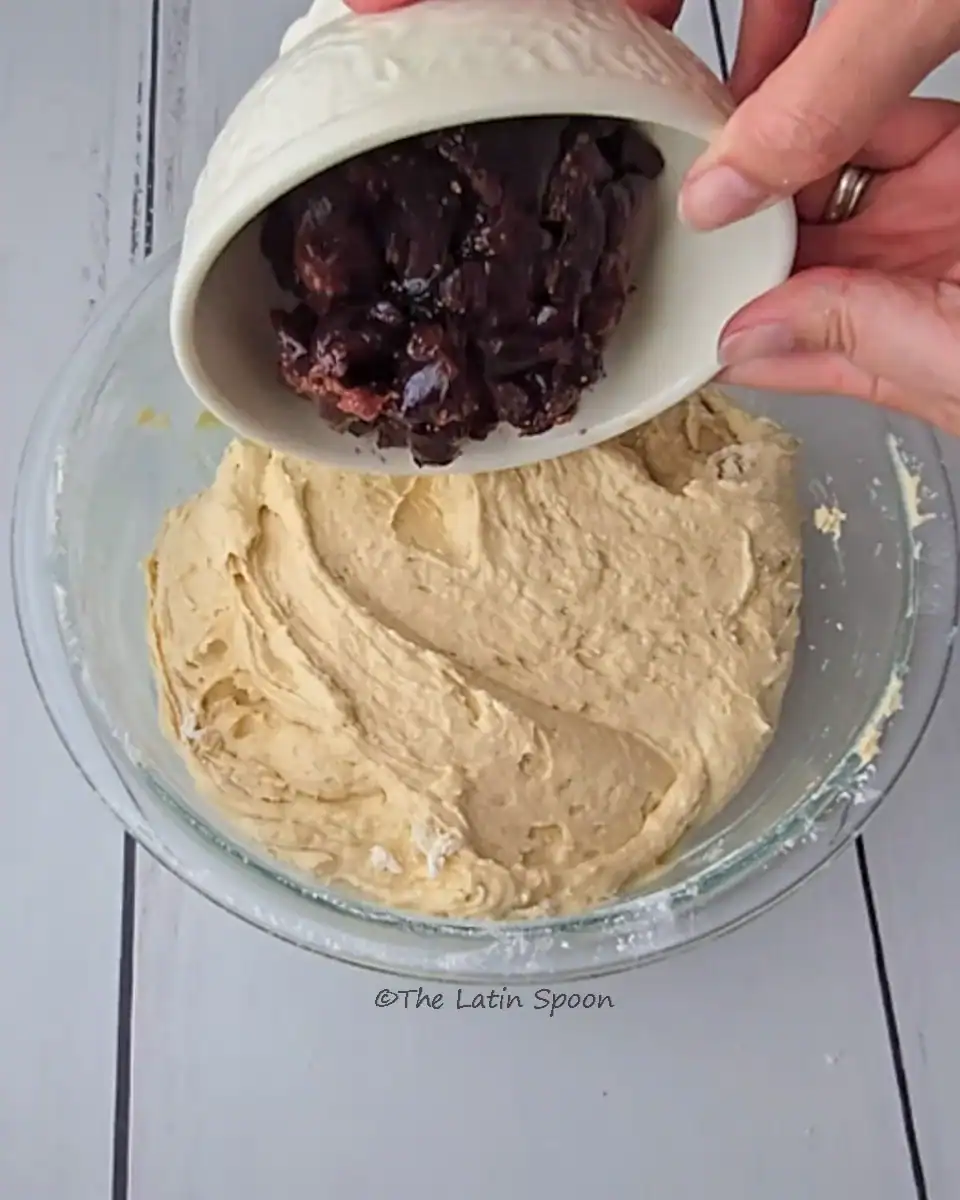
Step 7: Add the fig preserves and gently fold with a spatula until the mixture is well combined. Do not overmix.
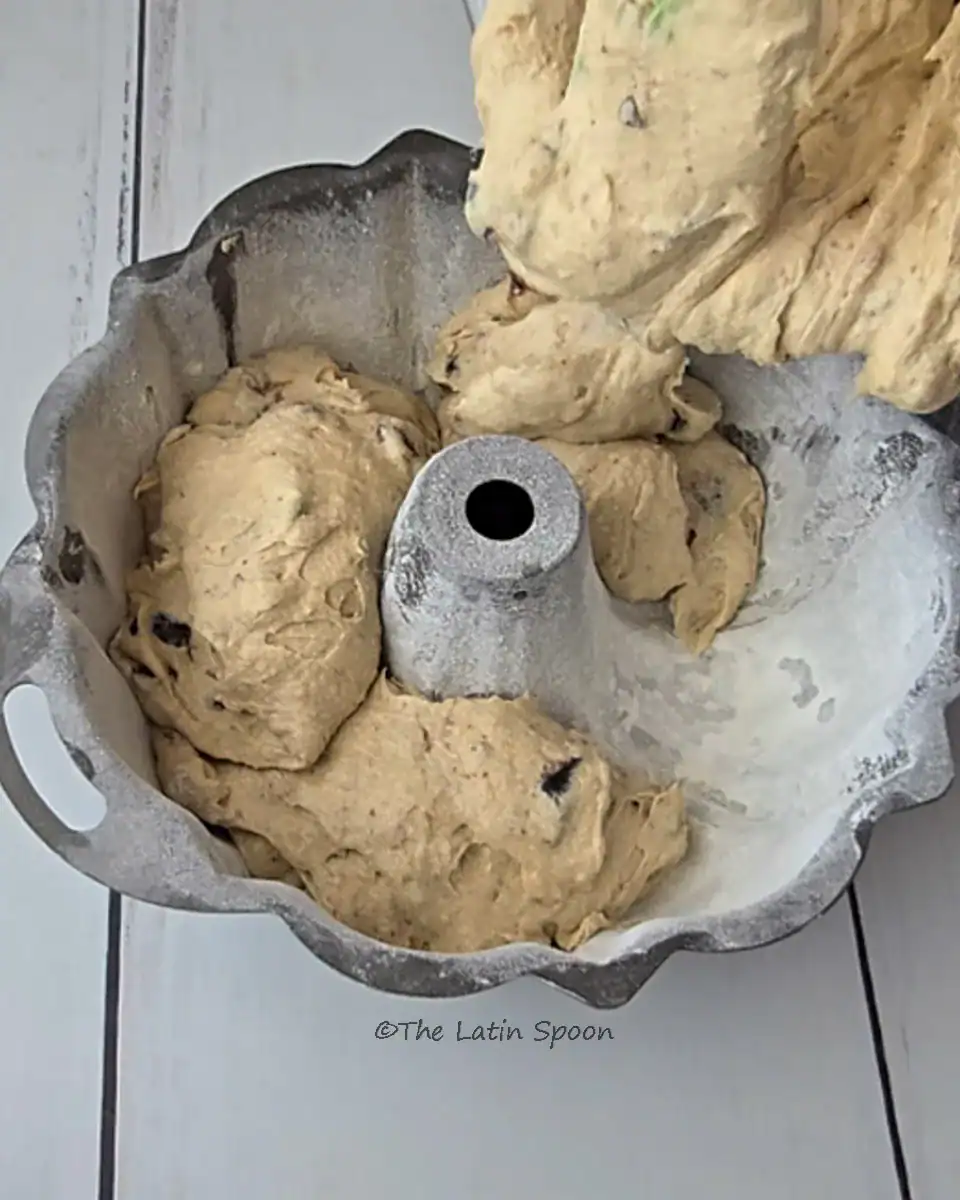
Step 8: Pour the batter into the prepared pan and bake for about 55 minutes, or until a bamboo stick inserted in the center comes out clean. Remove from the oven and let it rest before unmolding.
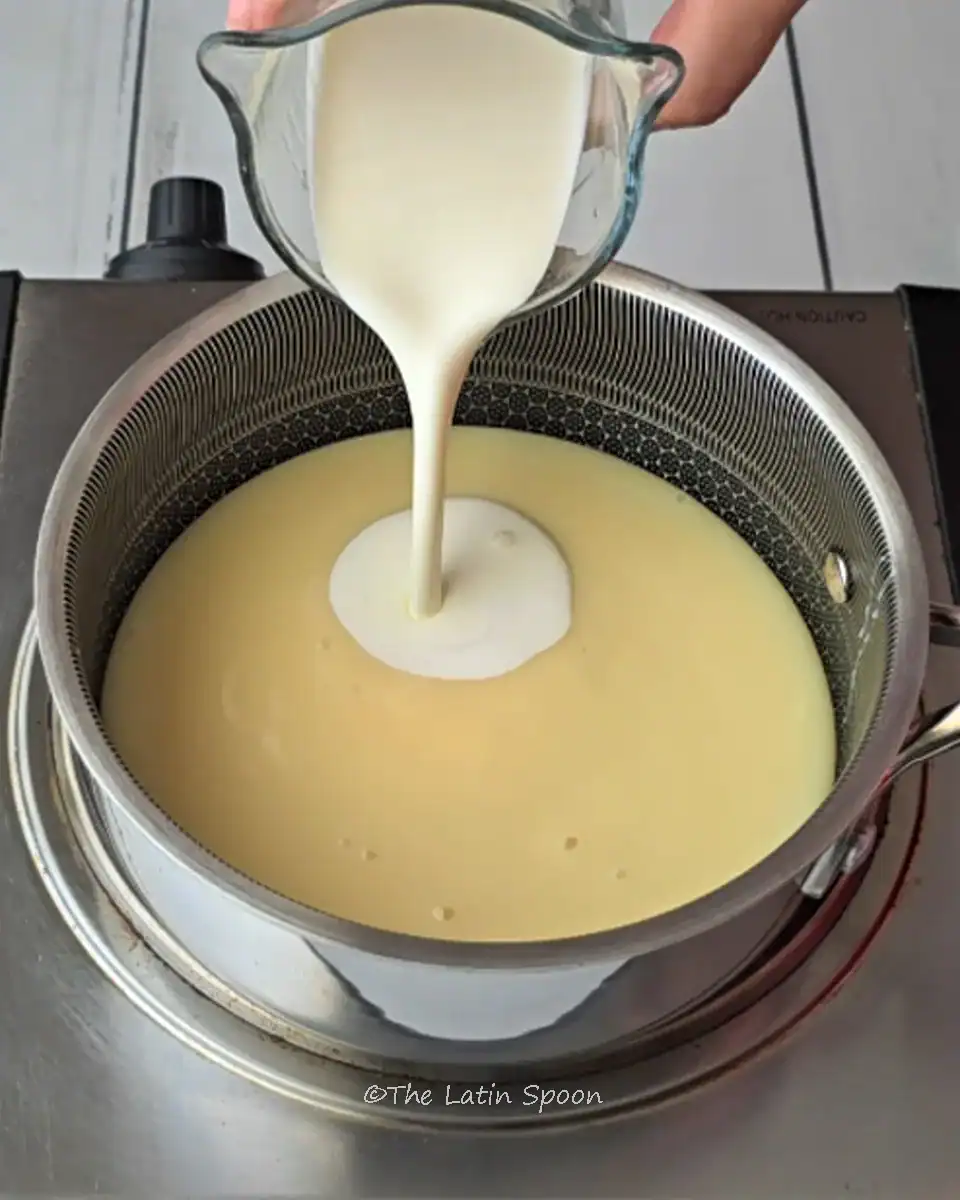
Step 9: To make the condensed milk glaze, add all the glaze ingredients to a small pot and cook over medium heat for 7-10 minutes, stirring constantly.
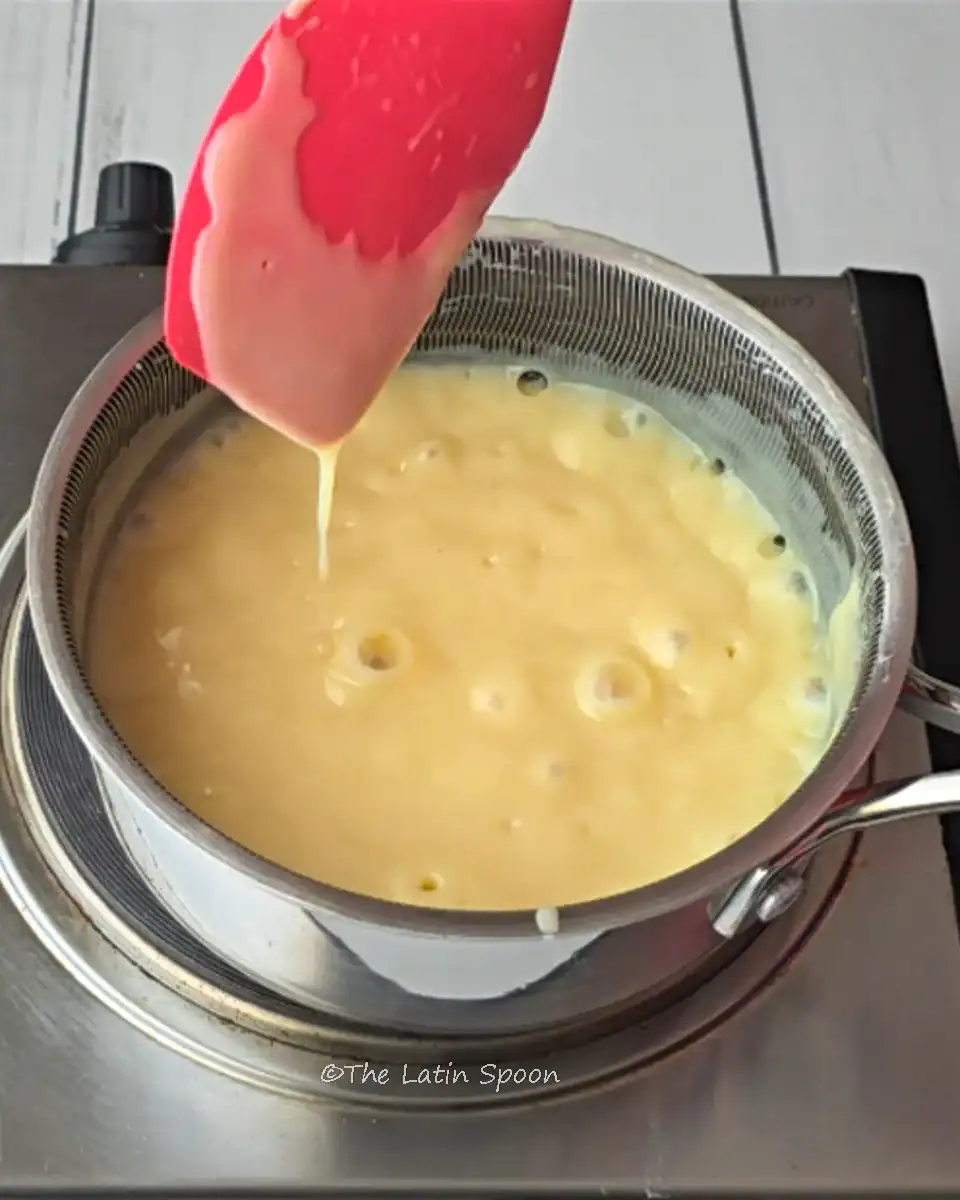
Step 10: Once it starts to thicken, check the consistency by lifting the spatula to see how it runs down. When it reaches your preferred thickness, remove it from the heat.
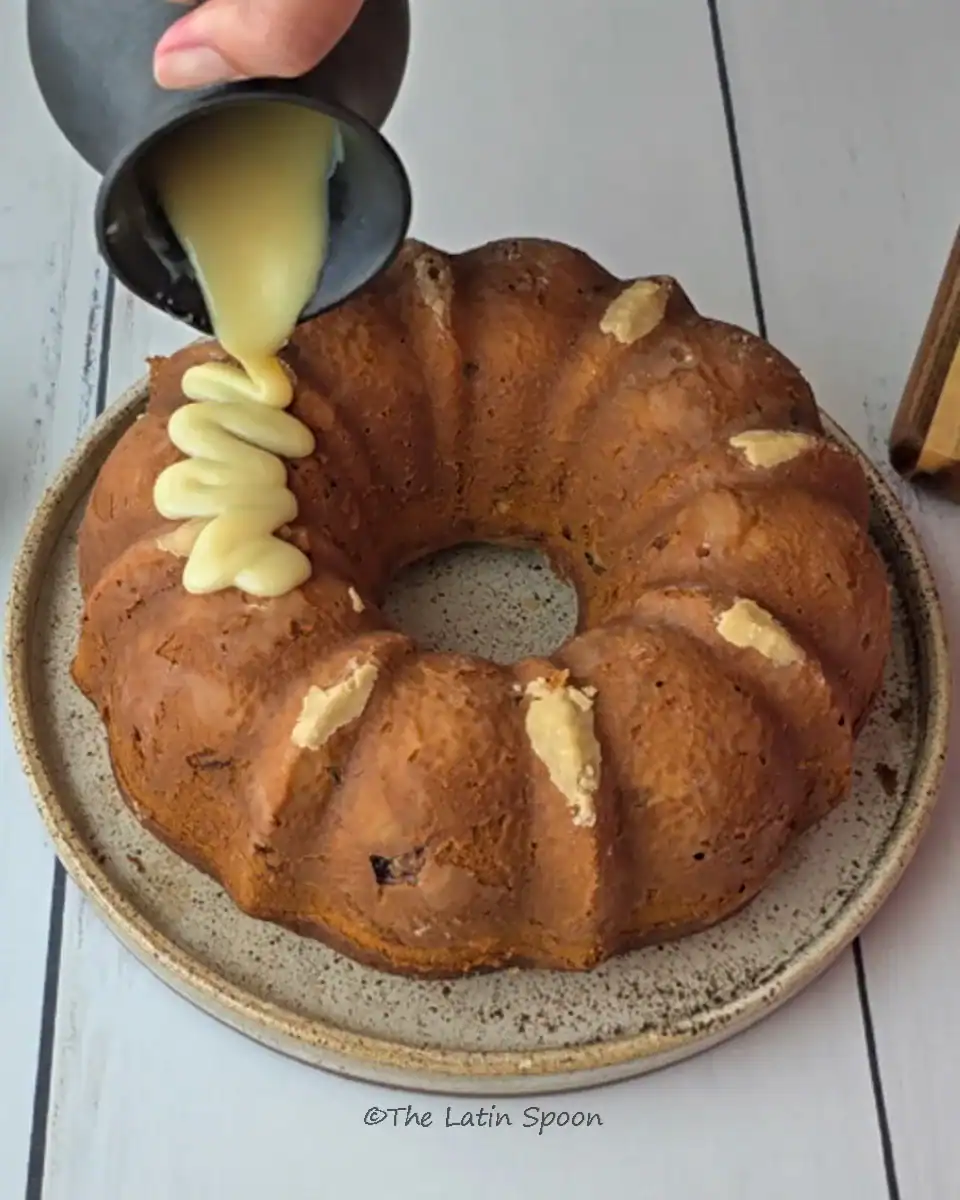
Step 11: Pour the condensed milk glaze over the cake, letting it drip naturally down the sides. Decorate with small pieces of figs on top to make it look even more beautiful and hint at the flavor inside.
💡 Your Fruit Salad Questions, Answered
Yes, you can use fresh figs instead of preserves. Just make sure to remove the stems, wash them well, and chop them into small pieces. Keep in mind that fresh figs have more water, so the texture might be slightly softer. If you want to keep the same balance of sweetness, you can sprinkle a little brown sugar over the chopped figs before adding them to the batter.
Absolutely. Use a 1:1 gluten-free baking flour (the kind that says “cup-for-cup” or “measure-for-measure”) and substitute it in the same amount. The texture will remain soft and delicious, just like the original recipe
If your condensed milk glaze thickened too much, don’t worry. Simply add one or two tablespoons of heavy cream or milk and stir over low heat until smooth again. The glaze will loosen up and become easier to pour over your cake.
Yes. You can replace the butter with vegan butter, the milk with plant-based milk (such as almond or oat milk), and the condensed milk with vegan condensed milk. You’ll still get a creamy and flavorful result.
This usually happens when the butter and sugar are not creamed long enough or when the batter is overmixed after adding the dry ingredients. Make sure to cream the butter and sugar for 5–7 minutes to incorporate enough air, and mix the batter only until everything is just combined.
Yes, you can. Fill your cupcake liners about three-quarters full and bake at 350°F (175°C) for 22-25 minutes, or until a toothpick inserted in the center comes out clean. You’ll get the same delicious flavor in a smaller, individual size.
🍈 Why you will love this recipe
Figs are in season right now, which makes it the perfect time to make a batch of Fig Preserves. Once you have them ready, this cake becomes a recipe you can enjoy any time of the year. Every bite of this fig cake is filled with the rich flavor of sweet, ripe figs. It’s sweet but not overly sweet, with a crumb that is soft yet firm, and the condensed milk glaze on top ties everything together beautifully. The result is a dessert that feels cozy, festive, and perfect for sharing with family and friends.
I hope you give this one a try, and let me know in the comments if there’s another Costa Rican dessert you’d like to see next
Besitos (kisses),
Mara
Fig Cake with Condensed Milk Glaze
Ingredients
Ingredients for the Fig Cake
- 2 sticks butter
- 1 cup brown sugar
- 4 eggs
- 2 ½ cups flour
- ½ teaspoon salt
- 3 teaspoons baking powder
- 1 teaspoon vanilla extract
- 1 cup milk
- 1 ½ cups figs about 10–12 caramelized figs
Ingredients for the glaze
- 1 can sweetened condensed milk
- ½ stick butter
- ½ cup heavy cream
- 1 teaspoon vanilla extract
- Figs for garnish
Instructions
Instructions for the Cake
- Preheat the oven to 350°F (175°C). Grease a bundt cake pan with oil spray, spread it evenly using a paper towel or napkin, remove any excess, and dust lightly with all-purpose flour. Tap gently to coat all corners, then discard the excess flour. Set aside
- In a medium bowl combine the flour, salt, and baking powder. Whisk for a few seconds until evenly mixed and set aside
- Drain the syrup from the figs, pat them dry, cut them in half, then in quarters, and into medium-sized pieces. Set aside
- In a large bowl add room-temperature unsalted butter (if using salted butter, skip the salt in the dry ingredients) and brown sugar. Beat at medium speed for 1–2 minutes, then increase to high speed and mix for 5–7 minutes until light, fluffy, and creamy. Stop the mixer occasionally to scrape the bottom and sides of the bowl.
- Add one egg at a time, mixing for about 40 seconds or until fully combined before adding the next. Repeat until all eggs are incorporated
- Stop the mixer before adding dry ingredients to avoid a mess. Add one-third of the dry mixture, mix on low speed just until combined, then add half of the milk. Repeat with another third of the dry ingredients, the remaining milk, and the final third of the dry ingredients. Mix only until everything is combined, do not overmix.
- Gently fold the chopped figs or fig preserves into the batter with a spatula until evenly distributed. The batter will look creamy and slightly darker if using black figs.
- Pour the batter gently into the prepared bundt pan, spreading it evenly with a spatula. Bake on the middle rack for 55 minutes, or until a bamboo stick inserted in the center comes out clean.
- Let the cake rest for about 10 minutes before flipping it onto a serving plate.
Instructions for the Glaze
- In a small pot add sweetened condensed milk, heavy cream, butter, and vanilla extract.
- Place over medium heat and cook for 5–10 minutes, stirring constantly. The butter will melt, and the glaze will begin to thicken.
- When the glaze lightly coats the spatula, remove it from the heat. Keep in mind it will thicken more as it cools.
- Pour the warm glaze over the cooled cake, letting it drip naturally down the sides for a glossy finish. Garnish with fresh or preserved fig pieces on top.
Video
Notes
- Always preheat the oven before mixing the batter.
- Use butter and eggs at room temperature for best results.
- Cream the butter and sugar for 5–7 minutes to get a fluffy texture.
- Add one egg at a time and mix only until combined.
- Do not overmix the batter.
- Let the cake rest for 10 minutes before unmolding.
- If the glaze gets too thick, add a little cream or milk and stir over low heat.
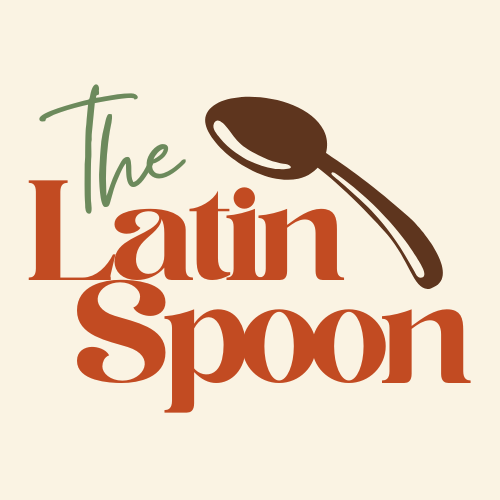
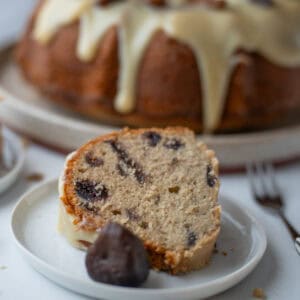
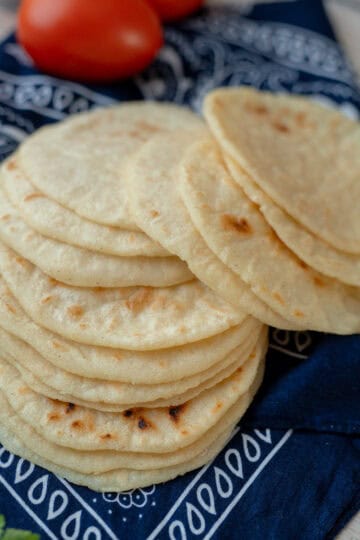
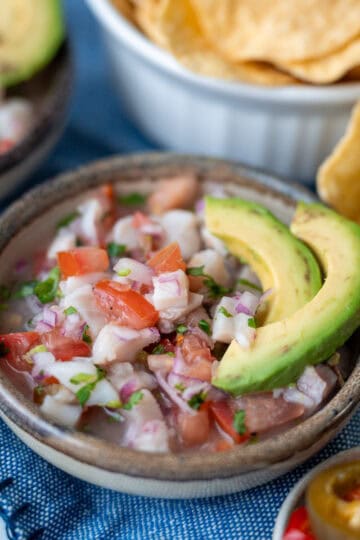
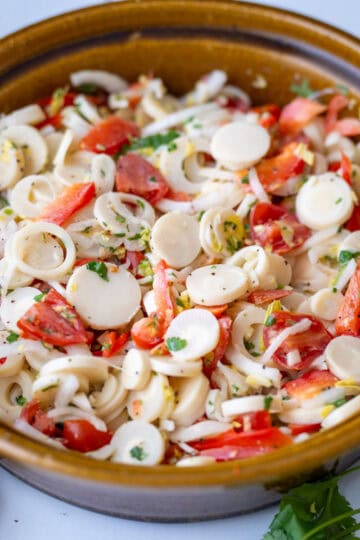
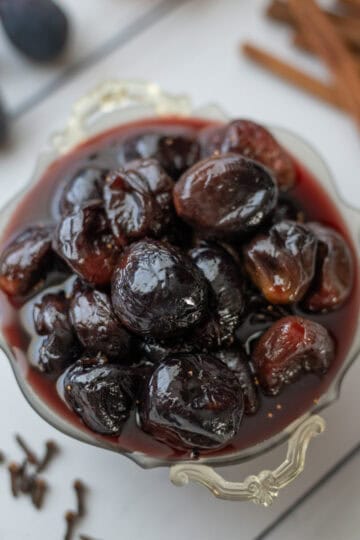
Leave a Reply